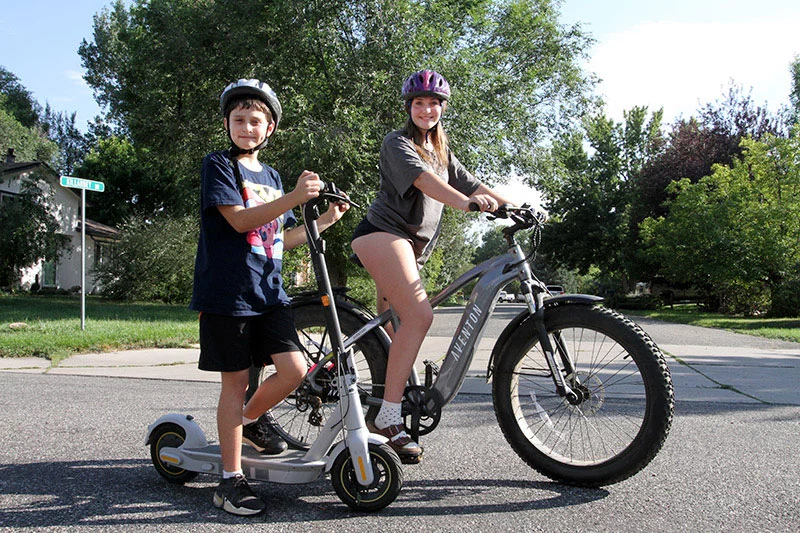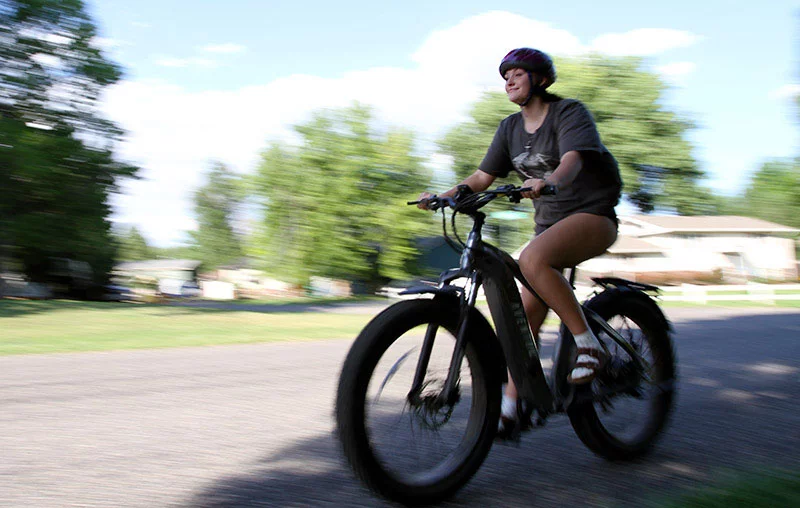
As e-bikes grow in popularity throughout Colorado and the rest of the country, medical experts are pushing for more safety as riders, especially young ones, may be at an increased risk for injury.
Each year, riders are purchasing nearly a million new e-bikes in the U.S., fueling a billion-dollar industry that continues to grow.
E-bikes allow riders to get from place to place quickly — at speeds of up to 20 miles per hour or more. They also assist riders in tackling tough terrain, like steep inclines and or when they’re facing strong headwinds. But the disadvantage of e-bikes is a big one. At higher speeds, riders have less control of the e-bike, and they have shorter reaction times to stop.
“While e-bikes offer wonderful opportunities for recreation and transportation, their increased speed means riders need more time and distance to stop safely,” said Dr. Alexander Meininger, an orthopedic surgeon in Steamboat Springs and a member of the medical staff at UCHealth Yampa Valley Medical Center. “We’re seeing that e-bike injuries can be more complex than those from traditional bicycle accidents, sometimes requiring treatment approaches typically reserved for motor vehicle incidents.”
Concerns for young e-bike users
Health care professionals have observed that young riders may be particularly vulnerable to these serious injuries. Children and adolescents, who are still developing their coordination and decision-making skills, may find the combination of speed and power particularly challenging to manage safely. Additionally, pedestrians sharing paths with e-bikes may feel uncertain about the speed and proximity of these faster-moving vehicles.
“You’ve got young riders who are still growing and developing their muscular-skeletal coordination, as well as their maturity, and they’re trying to master these powerful, motorized machines,” said Meininger. “It’s a vulnerable combination of unbridled power and speed.”
Myriad studies support Meininger’s concerns. According to the U.S. Consumer Product Safety Commission, injuries related to e-bikes and other mobility-assisted devices, such as e-scooters, have been trending upward annually by as much as 23% for several years.
Studies by the American Journal of Public Health, the American College of Surgeons and the Journal of the American Medical Association show a dramatic increase in injuries for users attributed to many factors such as a lack of enforcement of appropriate speed limits, age requirements and helmet use.
E-bikes are designated into three distinct categories to meet different needs and safety requirements:
- Class 1: Provides assistance only when pedaling, with speeds up to 20 mph.
- Class 2: Can operate without pedaling, also limited to 20 mph.
- Class 3: Requires pedaling assistance but can reach speeds up to 28 mph.
In Colorado, users and riders of Class 3 e-bikes must be at least 16 years old and wear a helmet.

Creating a culture of safe e-biking
Meininger suggested several approaches that can help families and communities enjoy e-bikes more safely:
- Consistent enforcement of speed limits on shared paths.
- Age-appropriate guidelines for different e-bike classes.
- Universal helmet use for young riders.
- Respectful sharing of spaces with pedestrians, traditional cyclists and pet owners.
- Following traffic laws, including proper lane usage and directional travel.
Parents considering e-bikes for their children are encouraged to take time to understand both the benefits and responsibilities that come with these powerful machines. Meininger recommended ensuring that young riders have developed the cognitive and physical skills necessary to handle higher speeds safely.
For families who do choose e-bikes, experts recommend selecting age-appropriate models, ensuring proper helmet use, and taking time to practice in safe environments before venturing onto busy paths or roads. Most importantly, ongoing conversations about respecting others and following traffic laws help create responsible riders who can enjoy e-biking for years to come.
“While e-bikes may look similar to traditional bicycles, their ability to reach speeds of 20-30 mph requires a higher level of awareness and responsibility,” he said. “It’s important for young riders to understand that their actions can affect not only their own safety but the safety and comfort of others sharing the same spaces.
“By working together, staying informed about best practices, and prioritizing safety — especially for our youngest riders, we can help ensure that e-bikes remain a positive addition to our communities, providing safe and enjoyable transportation options for appropriate users of all ages.”
This story first appeared in the Steamboat Pilot & Today.
